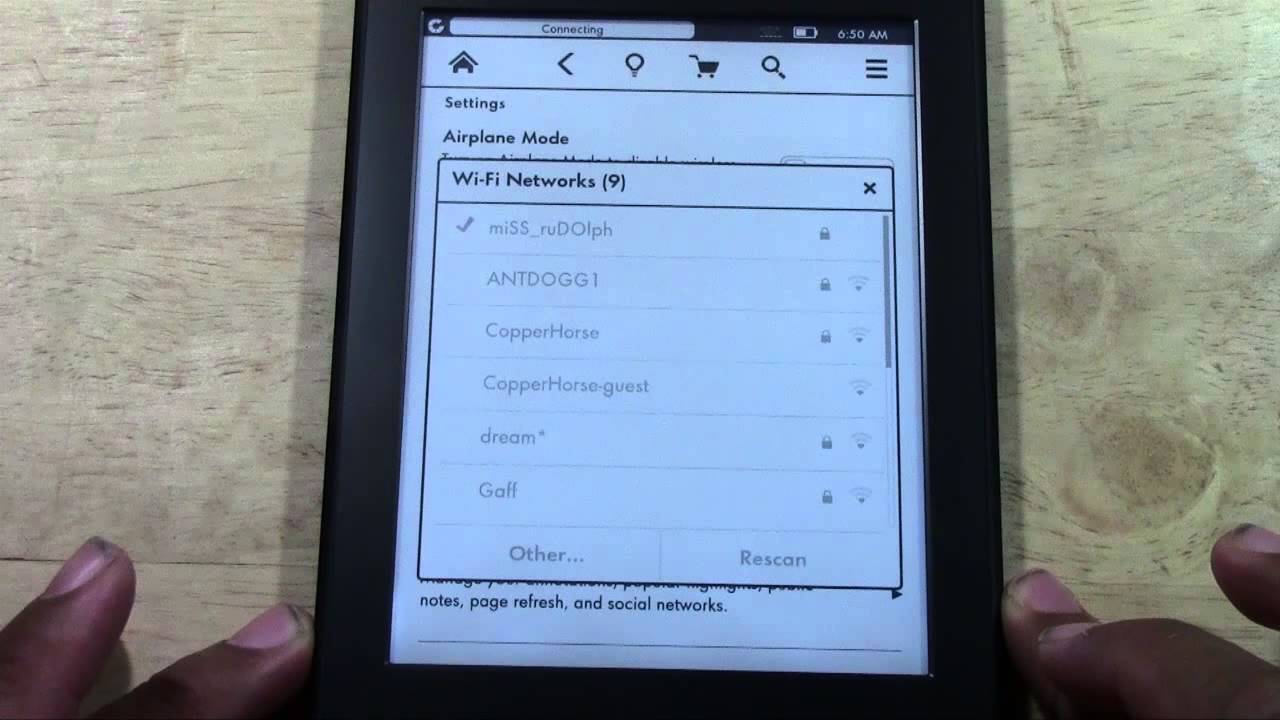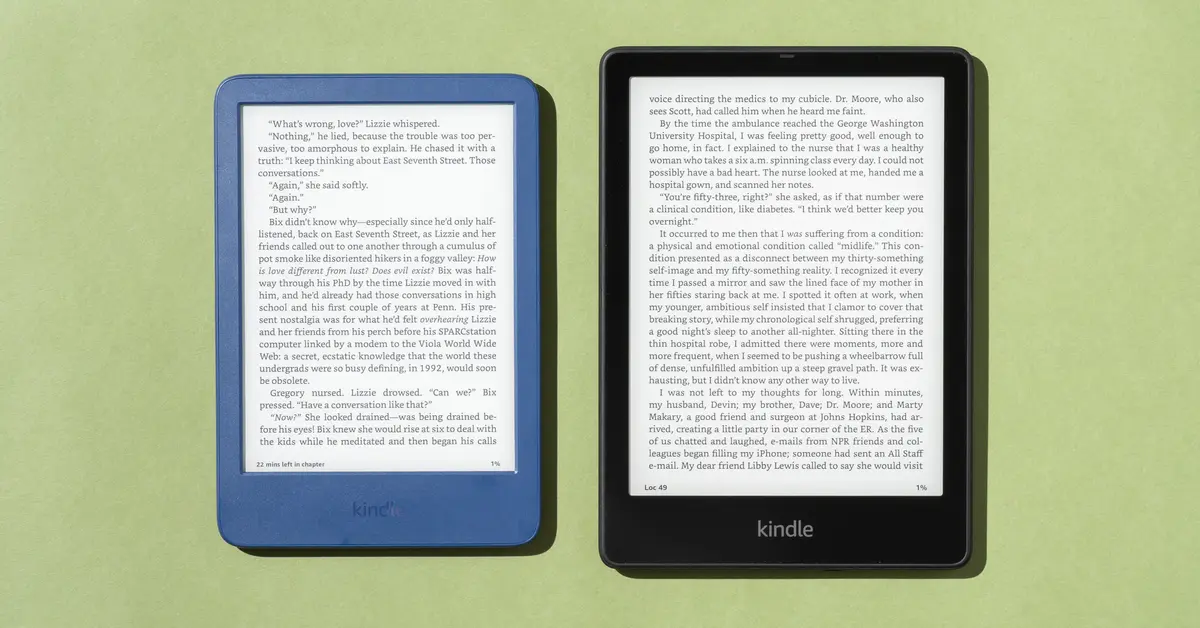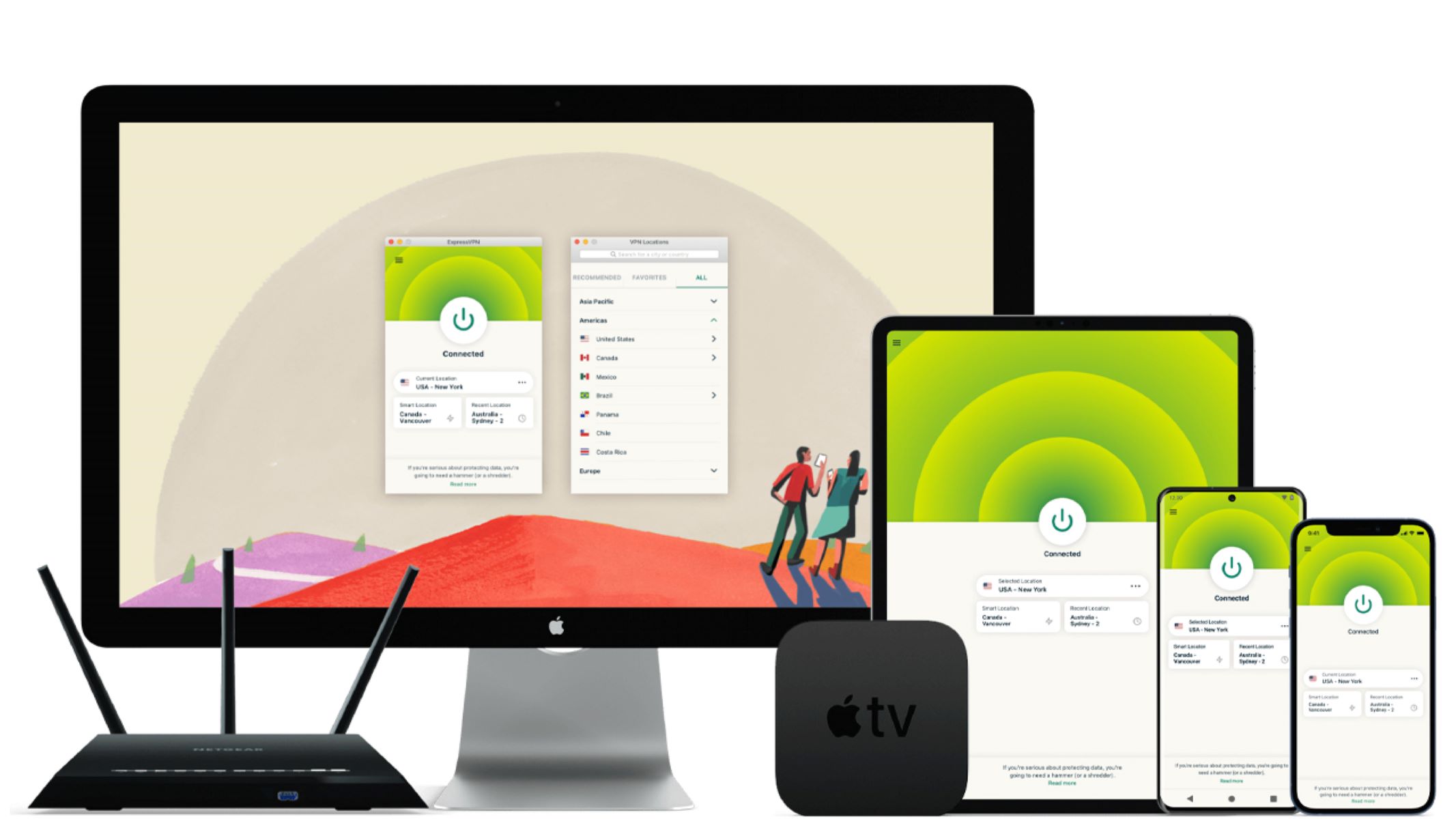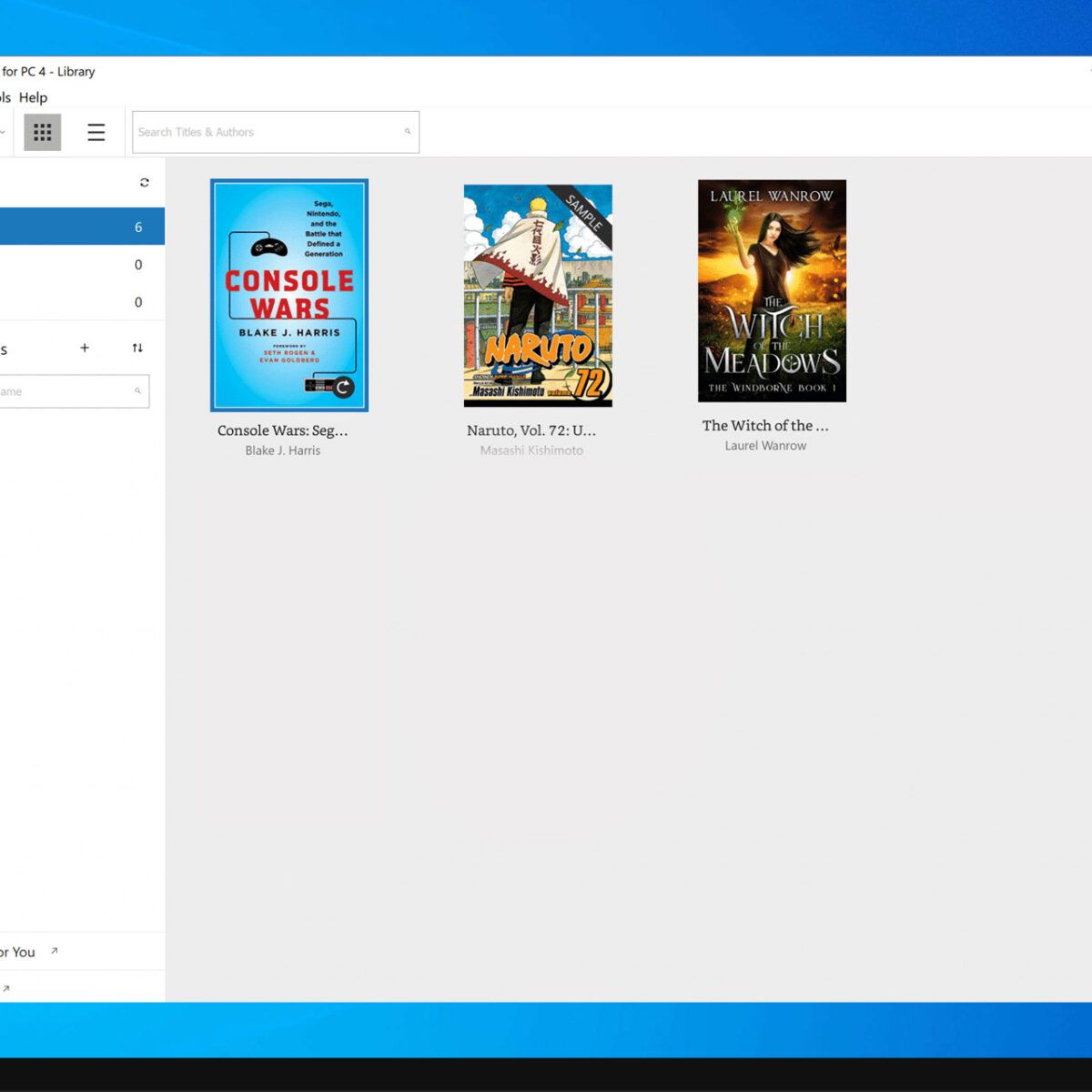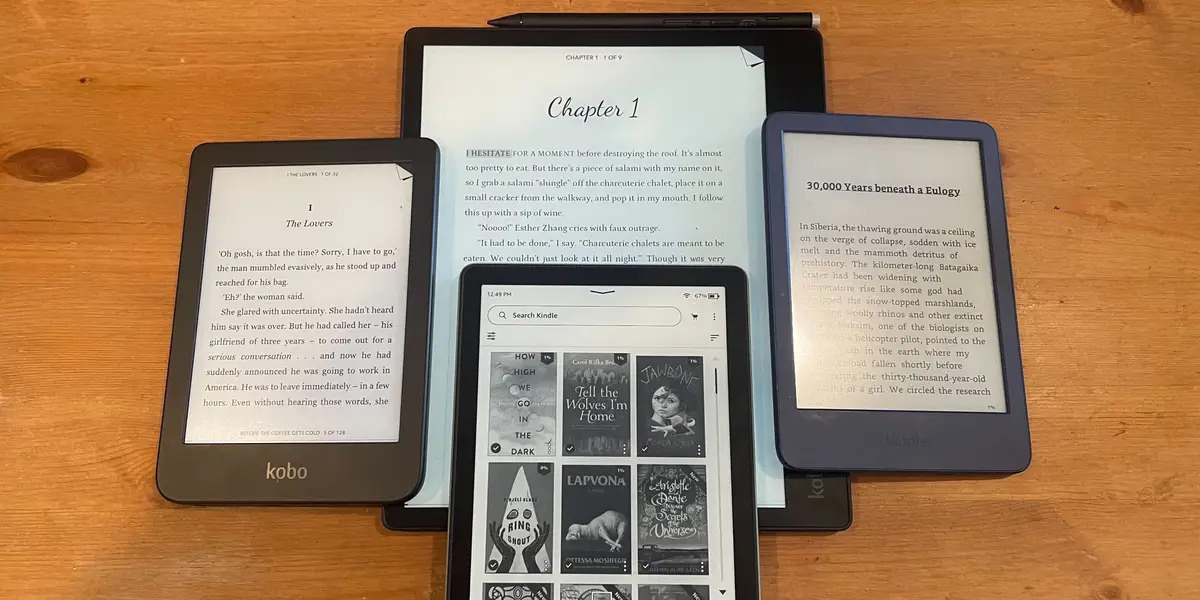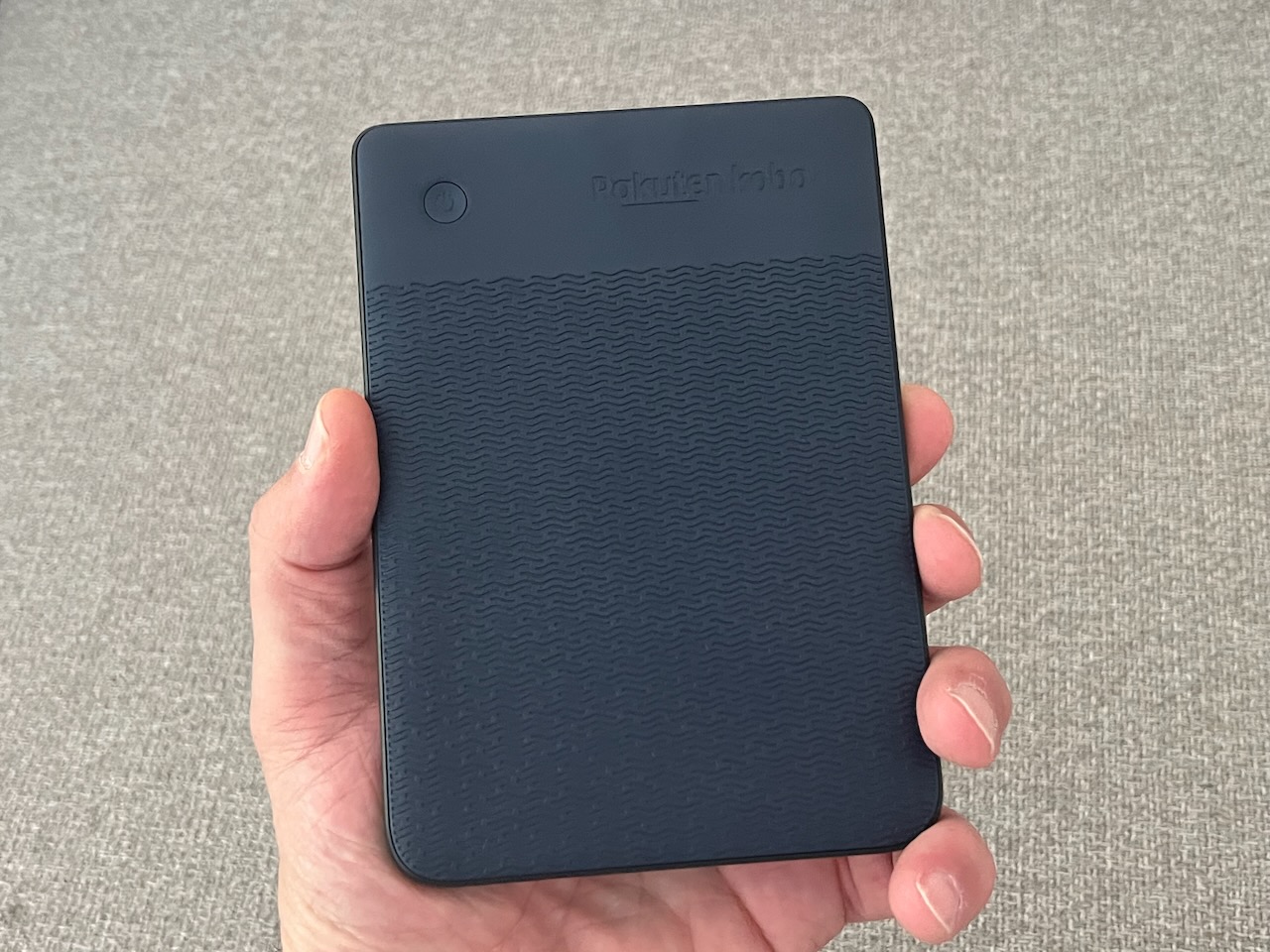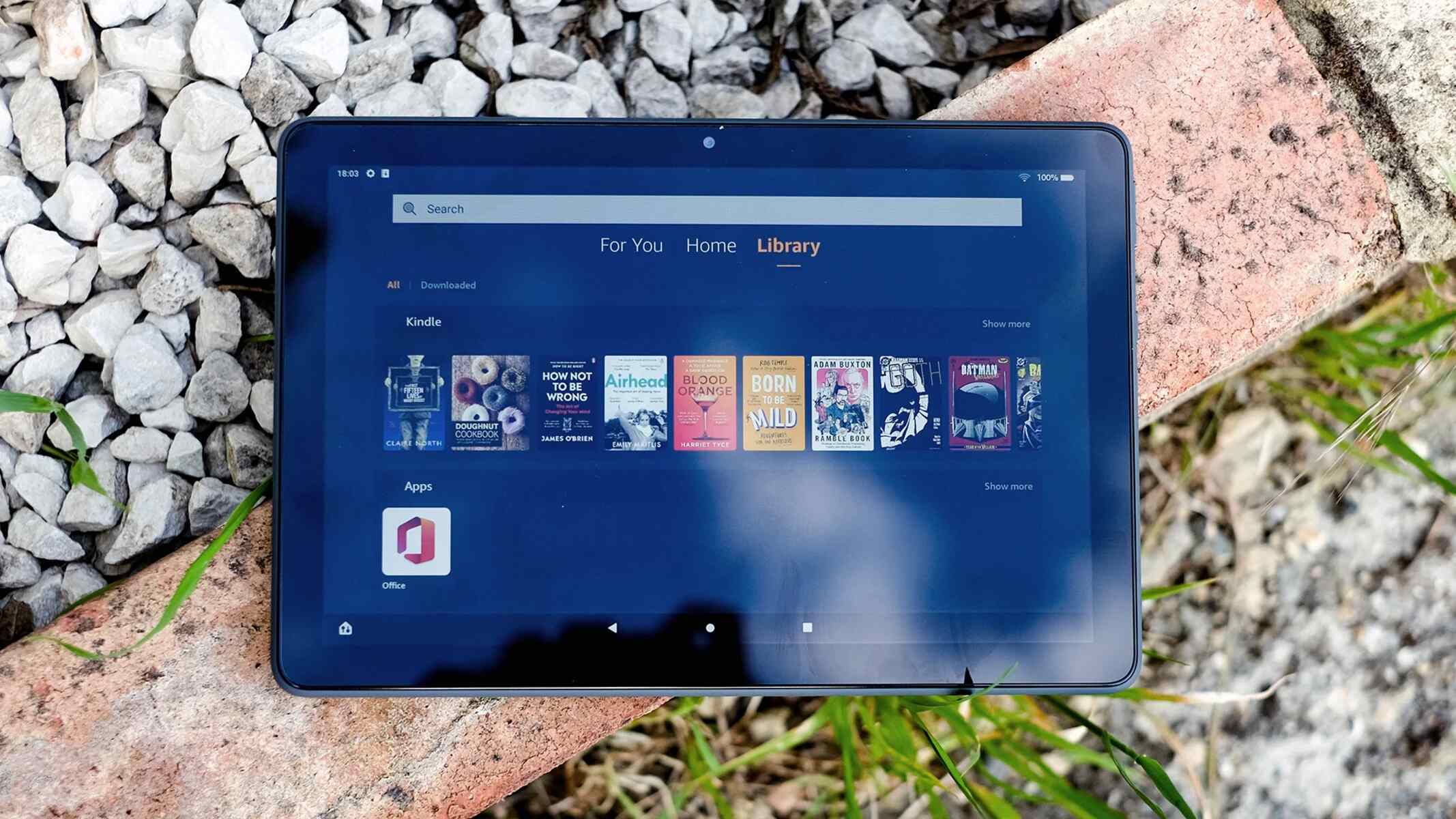Introduction
Connecting your Kindle to a Wi-Fi network is an essential step for enjoying the full range of features and services that this popular e-reader has to offer. Whether you are a bookworm who loves to read on the go or someone who enjoys the convenience of accessing your favorite books, magazines, or newspapers at the touch of a button, having a reliable Wi-Fi connection is a must.
With a Wi-Fi connection, your Kindle opens up a world of possibilities. You can easily download new books, browse the web, check your email, and even connect to social media platforms. It allows you to sync your reading progress across multiple devices, so you can seamlessly switch between your Kindle, smartphone, or tablet, without worrying about losing your place in a book.
But before you can enjoy these features, you need to establish a Wi-Fi connection on your Kindle. This article will guide you through the process, from checking if your Kindle has Wi-Fi capabilities to troubleshooting common connection issues and improving Wi-Fi signal strength.
Whether you’re a new Kindle owner or looking to make the most of your device’s Wi-Fi capabilities, read on to learn how to connect your Kindle to Wi-Fi and unlock a world of possibilities.
Why is a Wi-Fi connection necessary for Kindle?
A Wi-Fi connection is essential for your Kindle to access and download a wide range of content, as well as enjoy various features and services. Here’s why:
1. Access to a vast library of books: With a Wi-Fi connection, your Kindle can connect to the Amazon Kindle Store, providing you with access to millions of books, magazines, newspapers, and even audiobooks. You can browse and download your favorite titles instantly, without the need for physical copies.
2. Seamless content syncing: Wi-Fi allows your Kindle to sync your reading progress across devices. Whether you’re reading on your Kindle device, smartphone, or tablet, a Wi-Fi connection ensures that you can pick up where you left off, making it easy to transition between different devices.
3. Software updates: Having a Wi-Fi connection ensures that your Kindle remains up to date with the latest software. Regular updates enhance the performance and functionality of your device, providing you with an optimized reading experience.
4. Web browsing and email: Wi-Fi connectivity enables web browsing on your Kindle, allowing you to explore the internet, read articles, and access your favorite websites. You can also check your email directly from your Kindle, keeping you connected even when you’re on the go.
5. Social media integration: Many Kindle models offer social media integration, allowing you to connect your Kindle to your social media accounts. With Wi-Fi, you can easily share your reading progress, quotations, and book recommendations with friends and followers.
6. Cloud storage: By connecting to Wi-Fi, your Kindle can sync your library and personal documents to the Amazon Cloud. This ensures that your books and files are safely stored and accessible from any device with a Wi-Fi connection.
7. Access to additional features: Some Kindle models offer additional features such as X-Ray, Vocabulary Builder, and Word Wise. These features rely on a Wi-Fi connection to provide you with additional information about characters, word definitions, and learning tools to enhance your reading experience.
In summary, a Wi-Fi connection is essential for a Kindle as it enables access to a vast library of books, seamless syncing of content, software updates, web browsing, social media integration, cloud storage, and additional features. With Wi-Fi, you can make the most of your Kindle’s capabilities and enjoy a world of reading and digital content at your fingertips.
How to check if your Kindle has Wi-Fi capabilities
Before connecting your Kindle to a Wi-Fi network, it’s important to ensure that your device has Wi-Fi capabilities. Here are the steps to check if your Kindle has Wi-Fi:
1. Identify your Kindle model: Each Kindle model has different features and specifications. To determine if your Kindle has Wi-Fi capabilities, first, identify your Kindle model. You can usually find the model information on the back of your device or in the settings menu.
2. Check for Wi-Fi symbol: Look for the Wi-Fi symbol on your Kindle device. The symbol typically looks like a series of curved lines, similar to sound waves, representing the wireless signal. If you see the Wi-Fi symbol on your device, it means that your Kindle has Wi-Fi capabilities.
3. Access the settings menu: Open the settings menu on your Kindle. The location of the settings menu may vary depending on your Kindle model, but it is usually accessible from the home screen or by tapping the three dots or lines in the top-right corner of the screen. Look for the “Settings” or “Options” option.
4. Look for Wi-Fi options: Once in the settings menu, navigate to the wireless or network settings section. If your Kindle has Wi-Fi capabilities, you should see options related to Wi-Fi, such as “Wi-Fi Networks,” “Wi-Fi Settings,” or “Wireless Connectivity.”
5. Verify Wi-Fi connectivity: Within the Wi-Fi settings, check if there is an option to enable or disable Wi-Fi. If there is, it confirms that your Kindle has Wi-Fi capabilities. You may also see a list of available Wi-Fi networks in the area, further indicating that your Kindle is Wi-Fi enabled.
If you’re unable to find the Wi-Fi settings or if your Kindle doesn’t have the Wi-Fi symbol, it may indicate that your device does not have Wi-Fi capabilities. In this case, you might consider upgrading to a newer Kindle model that offers Wi-Fi connectivity.
Remember to consult your Kindle’s user manual or refer to the official Amazon website for specific instructions and information tailored to your model. With a Wi-Fi-enabled Kindle in hand, you’re ready to connect to available networks and enjoy the multitude of features offered by this e-reader.
Step-by-step guide to connecting Kindle to Wi-Fi
Connecting your Kindle to a Wi-Fi network is a simple process. Follow these steps to establish a Wi-Fi connection on your Kindle:
Step 1: Ensure Wi-Fi is enabled: First, make sure that the Wi-Fi feature on your Kindle is turned on. On most Kindle models, you can do this by going to the home screen and tapping on the settings icon (usually represented by a gear or three dots). Then, select “Wireless” or “Wi-Fi” from the options and toggle the Wi-Fi switch to the ON position.
Step 2: Select available networks: After enabling Wi-Fi, your Kindle will display a list of available Wi-Fi networks within range. Locate and select your desired network from the list. If you don’t see your network listed, make sure the Wi-Fi router is turned on and broadcasting the network signal correctly.
Step 3: Enter Wi-Fi password (if applicable): If your Wi-Fi network is password-protected, you will be prompted to enter the password. Use the on-screen keyboard to input the password accurately. Take note that passwords are case-sensitive, so enter them exactly as provided by your Wi-Fi network administrator.
Step 4: Connect to the Wi-Fi network: Once the correct password is entered, select the “Connect” or “Join” button, and your Kindle will attempt to establish a connection to the selected Wi-Fi network. Depending on the network and signal strength, it may take a few moments for the connection to be established successfully.
Step 5: Confirm the connection: After successfully connecting to the Wi-Fi network, your Kindle will display a confirmation message or symbol, indicating that the connection has been established. You should now have full access to all the online features and services available on your Kindle.
It’s important to note that Kindle models may vary slightly in terms of the interface and exact steps required to connect to Wi-Fi. Always consult your device’s user manual or the official Amazon website for specific instructions tailored to your Kindle model.
Now that your Kindle is connected to Wi-Fi, you can enjoy seamless access to the Kindle Store, sync your reading progress, download new books, and explore numerous online features and content options available at your fingertips.
Troubleshooting common Wi-Fi connection issues
While connecting your Kindle to a Wi-Fi network is usually a straightforward process, there may be occasions when you encounter some common connectivity issues. Here are some troubleshooting steps to help you resolve these problems:
1. Check your Wi-Fi network: Ensure that your Wi-Fi router is turned on and functioning properly. Verify if other devices can connect to the network without any issues. If the problem persists, try restarting your router by unplugging it from the power source for a few seconds, then plugging it back in.
2. Restart your Kindle: Sometimes, a simple restart can fix connectivity issues. Press and hold the power button on your Kindle device, then select “Restart” or “Power Off” from the on-screen options. Once your device has powered off, press the power button again to turn it back on and attempt to connect to Wi-Fi again.
3. Verify Wi-Fi signal strength: Wi-Fi signal strength can affect the stability and speed of your connection. Ensure your Kindle is within range of the Wi-Fi router and that there are no physical obstructions or interference sources (like microwave ovens or cordless phones) affecting the signal quality. If possible, move closer to the router to improve signal strength.
4. Forget and reconnect to Wi-Fi: If your Kindle has previously connected to a Wi-Fi network but is now experiencing issues, try removing the network from your device’s memory. Go to the Wi-Fi settings, locate the problematic network, and select “Forget” or “Remove.” Then, reconnect to the network by selecting it from the available networks list and entering the password, if required.
5. Update Kindle software: Outdated software can sometimes cause connectivity issues. Ensure that your Kindle’s software is up to date by going to the settings menu, selecting “Device Options” or “Device Information,” and checking for available software updates. If an update is available, follow the on-screen instructions to install it.
6. Reset network settings: If none of the above steps have resolved the issue, you can try resetting your device’s network settings. Go to the settings menu, select “Wireless” or “Wi-Fi,” and choose the option to reset network settings or to restore the device to factory settings. Keep in mind that this will remove any saved Wi-Fi networks and require you to set up Wi-Fi connections again.
If you have tried these troubleshooting steps and are still unable to connect your Kindle to Wi-Fi, consider reaching out to Kindle customer support or referring to the official Amazon website for further assistance.
By addressing common Wi-Fi connection issues, you can ensure a stable and reliable internet connection for your Kindle, allowing you to make the most of its features and enjoy endless reading and online content possibilities.
Tips to improve Wi-Fi signal strength on Kindle
A strong and stable Wi-Fi signal is crucial for a seamless reading experience on your Kindle. If you’re experiencing weak or unstable Wi-Fi signal, try implementing these tips to improve the signal strength:
1. Position your Kindle closer to the router: The closer your Kindle is to the Wi-Fi router, the stronger the signal will be. Try moving your Kindle within the range of the router to increase the signal strength.
2. Remove obstructions: Physical obstructions, such as walls, furniture, and appliances, can weaken Wi-Fi signals. Keep your Kindle and the Wi-Fi router in the same line of sight, and minimize the number of obstacles between them for better signal reception.
3. Reduce interference: Other electronic devices, such as cordless phones, microwave ovens, and Bluetooth devices, can interfere with Wi-Fi signals. Keep your Kindle away from these devices or switch them off to minimize interference.
4. Adjust your router settings: Access your Wi-Fi router’s settings and experiment with different channels and frequencies. Some channels may be more crowded than others, so switching to a less congested channel might improve the signal quality. Consult your router’s user manual or contact your internet service provider for assistance.
5. Restart your router regularly: Restarting your Wi-Fi router periodically can help resolve temporary issues and improve signal strength. Simply unplug the router from the power source, wait for a few seconds, and then plug it back in.
6. Use a Wi-Fi extender or repeater: If the Wi-Fi signal doesn’t reach all areas of your home, consider using a Wi-Fi extender or repeater. These devices amplify and extend the Wi-Fi signal to ensure broader coverage, allowing you to use your Kindle in areas with weaker signals.
7. Secure your Wi-Fi network: Unauthorized users connecting to your Wi-Fi network can slow down the connection. Protect your network with a strong password and enable network encryption (such as WPA2) to prevent others from accessing your bandwidth and weakening the signal.
8. Update your Kindle’s software: Regularly check for software updates on your Kindle and keep it up to date. Software updates often include improvements to Wi-Fi connectivity and signal reception.
9. Reset network settings on your Kindle: If you’re still experiencing issues, you can try resetting the network settings on your Kindle. In the settings menu, look for the option to reset network settings or restore the device to factory settings. Be aware that this will remove saved Wi-Fi networks and require you to set them up again.
By implementing these tips, you can optimize the Wi-Fi signal strength on your Kindle and enjoy a reliable and seamless reading experience wherever you go.
Frequently Asked Questions about Kindle Wi-Fi Connection
Here are answers to some commonly asked questions about connecting a Kindle to Wi-Fi:
Q: Can I connect my Kindle to Wi-Fi networks other than my home network?
A: Yes, you can connect your Kindle to any Wi-Fi network that is within range and for which you have the password (if applicable). This allows you to connect to Wi-Fi hotspots, public networks, or networks at friends’ houses, provided you have the necessary credentials.
Q: Do I need a computer to connect my Kindle to Wi-Fi?
A: No, you do not need a computer to connect your Kindle to Wi-Fi. Kindle devices are designed to connect directly to Wi-Fi networks without requiring a computer as an intermediary.
Q: Can I connect my Kindle to a 5GHz Wi-Fi network?
A: Kindle devices typically support 2.4GHz Wi-Fi networks. While some newer models may also support 5GHz networks, it’s advisable to consult your device’s specifications or user manual to confirm if your Kindle supports 5GHz Wi-Fi.
Q: Can I connect multiple Kindles to the same Wi-Fi network?
A: Yes, you can connect multiple Kindles to the same Wi-Fi network. Each Kindle device will have its own unique connection, allowing multiple users to access the network simultaneously.
Q: How do I change the Wi-Fi network on my Kindle?
A: To change the Wi-Fi network on your Kindle, access the settings menu, select “Wireless” or “Wi-Fi,” and then choose the option to “Change Wi-Fi network” or “Connect to a different network.” From there, you can select a new network from the list of available networks and enter the corresponding password, if required.
Q: Why does my Kindle keep disconnecting from Wi-Fi?
A: Several factors could cause your Kindle to disconnect from Wi-Fi intermittently. Weak Wi-Fi signal, interference from other devices, or outdated software are common culprits. Try moving closer to the Wi-Fi router, reducing interference sources, or updating your Kindle’s software to resolve the issue.
Q: Can I connect my Kindle to a WPA3-encrypted network?
A: Kindle devices generally support WPA2-encrypted networks, which is the most widely used security protocol. However, support for newer encryption standards like WPA3 may vary depending on the Kindle model. Check your device’s specifications or user manual to confirm its compatibility.
Q: Will connecting to a public Wi-Fi network pose a security risk to my Kindle?
A: Connecting to a public Wi-Fi network may expose your Kindle to potential security risks. It’s advisable to exercise caution when using public networks and avoid accessing sensitive information or making financial transactions unless you are connected over a secure and trusted connection, such as a virtual private network (VPN).
Q: How do I forget a Wi-Fi network on my Kindle?
A: To forget a Wi-Fi network on your Kindle, access the settings menu, select “Wireless” or “Wi-Fi,” and then choose the option to “Forget” or “Remove” the network. This will remove the network’s credentials from your Kindle’s memory.
If you have additional questions or encounter specific issues with your Kindle’s Wi-Fi connection, it’s recommended to refer to the official Amazon Kindle support or consult the device’s user manual for further assistance.
Conclusion
Establishing a Wi-Fi connection on your Kindle is a crucial step to unlock its full potential. With a reliable Wi-Fi connection, you can seamlessly download books, sync your reading progress, browse the web, and access a range of online features and services. This article has provided a comprehensive guide, from checking if your Kindle has Wi-Fi capabilities to troubleshooting common connection issues.
We explored the importance of Wi-Fi connectivity on a Kindle, including access to a vast library of books, seamless content syncing across devices, software updates, web browsing, social media integration, cloud storage, and additional features. We also discussed how to determine if your Kindle has Wi-Fi capabilities and provided a step-by-step guide to connect your Kindle to a Wi-Fi network.
Additionally, we addressed common Wi-Fi connection issues and provided troubleshooting tips to enhance signal strength and stability on your Kindle. We discussed the significance of positioning your Kindle closer to the router, removing physical obstructions, reducing interference, adjusting router settings, regular restarting of the router, using Wi-Fi extenders or repeaters, securing your Wi-Fi network, updating Kindle software, and resetting network settings if necessary.
Lastly, we addressed frequently asked questions to provide further clarity on various aspects of Kindle Wi-Fi connection.
By following the guidelines and implementing the tips provided in this article, you can ensure a seamless and reliable Wi-Fi connection on your Kindle, enhancing your reading experience and allowing you to explore the vast world of digital content available at your fingertips.







